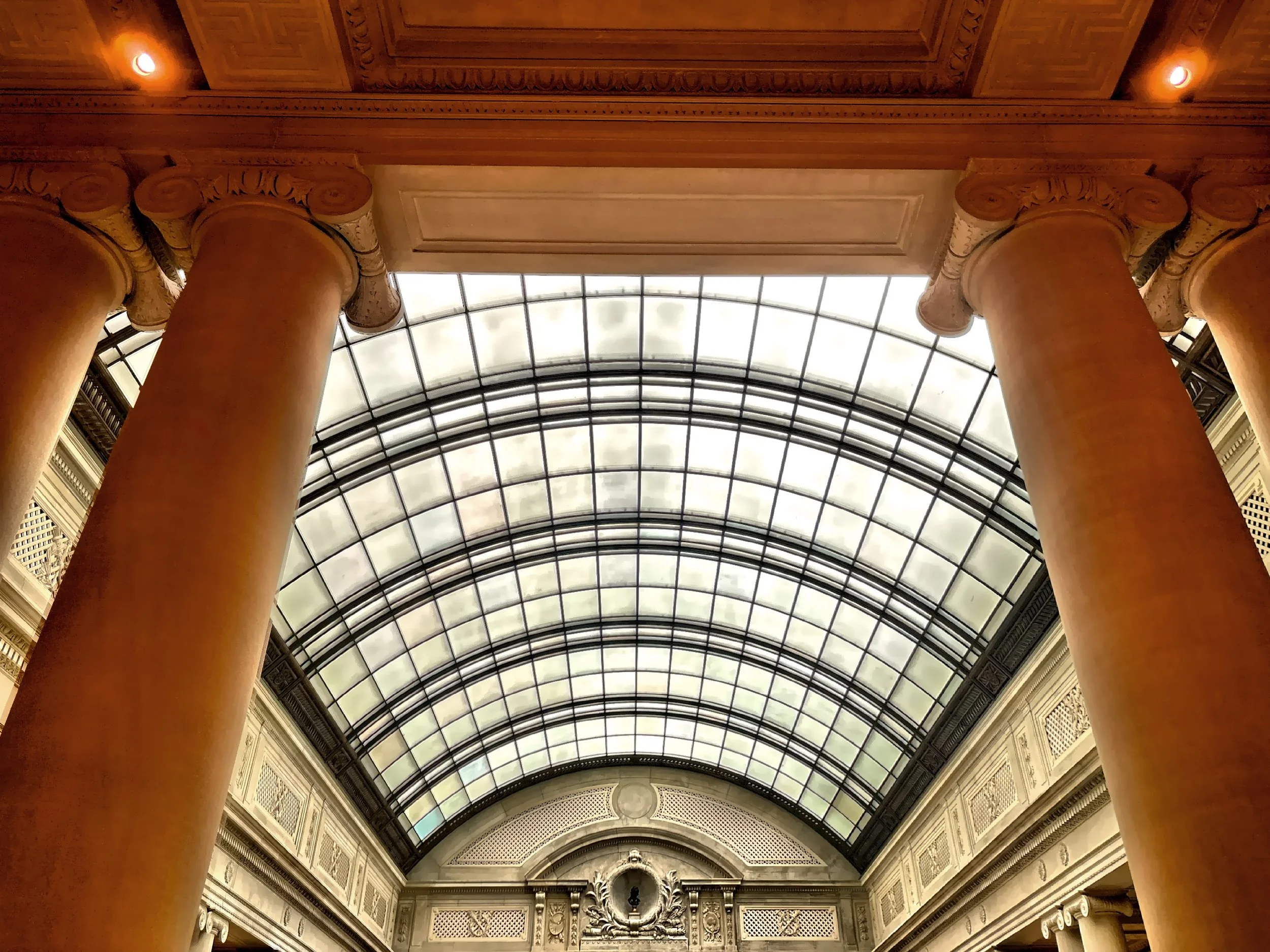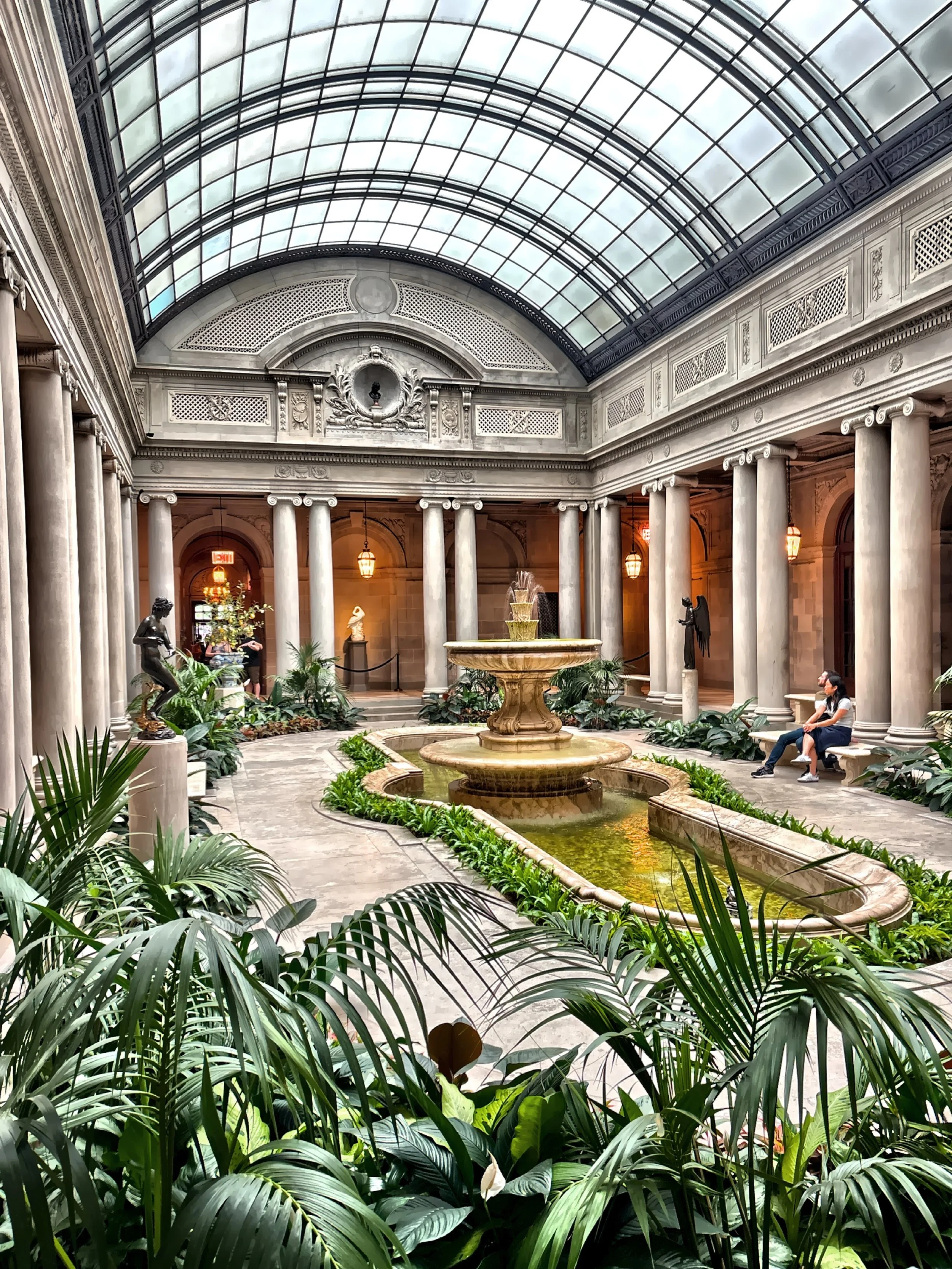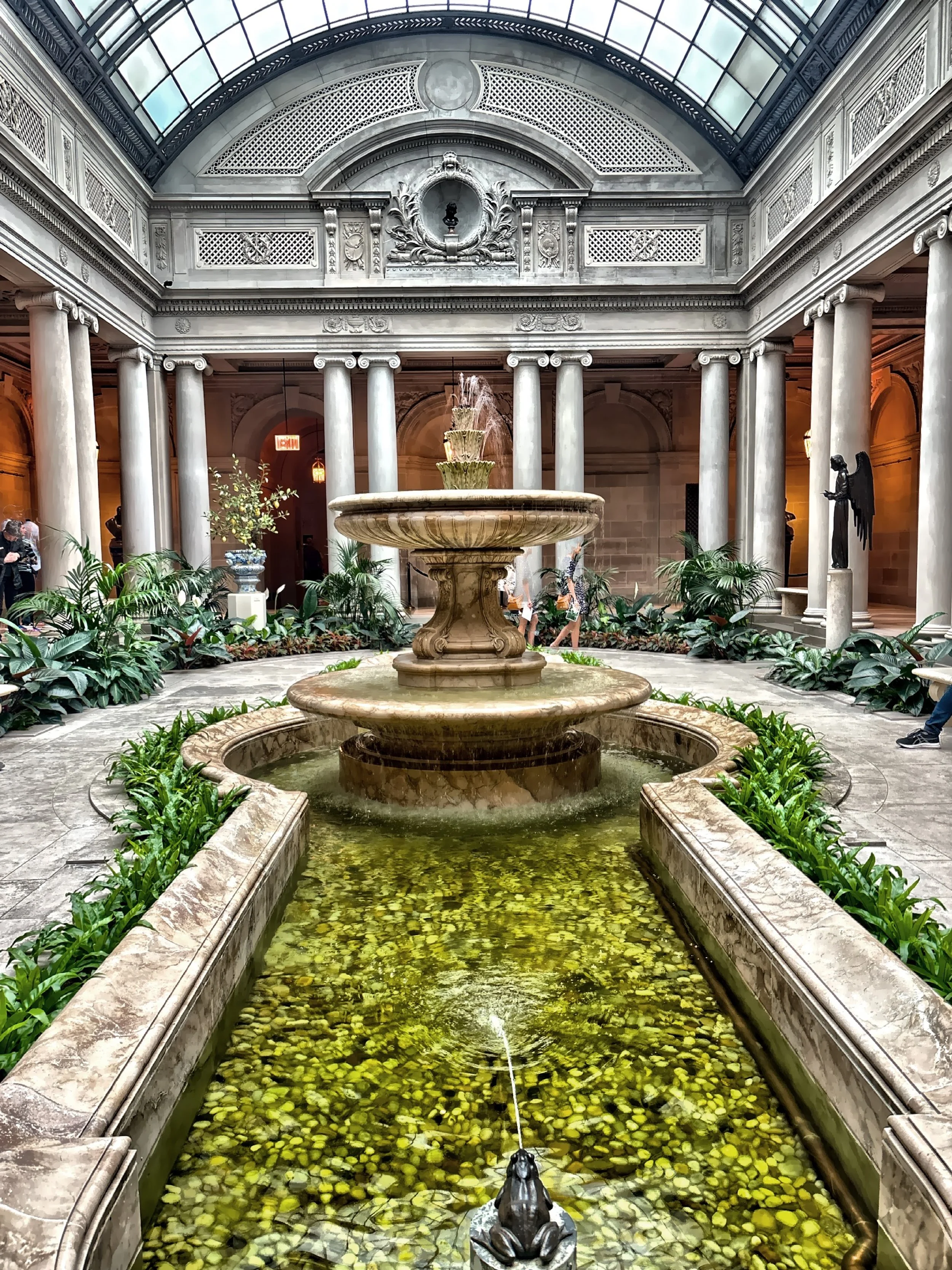Founded As The Personal Collection Of Henry Frick - The Frick Collection
The Frick Collection is widely celebrated for its intimate, domestic setting within the original mansion, which creates a personal, almost home-like atmosphere for viewing the art. The collection is permanent and unchanging, as stipulated in Frick’s will, although temporary exhibitions are occasionally added. It features European paintings—particularly from the Renaissance through the 19th century—as well as sculptures, porcelain, furniture, and enamels. Notable artists represented include Vermeer, Rembrandt, Goya, and El Greco.
The Collection is housed in the former residence of Henry Frick located on Fifth Avenue between 70th and 71st Streets on the upper east side of Manhattan. Designed by Thomas Hastings the Beaux-Arts style mansion, with elevated garden, it was completed in 1914 at a cost of nearly $5,000,000, including the land. The house was built to showcase Frick’s paintings and other works of art and remained essentially unchanged from construction until 1931.
Frick started out in the coke business producing nearly 80% of the coke used by Pittsburgh's growing iron and steel industries. He married Adelaide Howard Childs in 1881 and the couple had four children, though only two survived into adulthood. The Fricks lived in an 11-room Italianate-style home in Pittsburgh called Clayton. This property contains a house museum and art museum and is available for tours. Another Frick family property that can be visited is son Childs Frick’s estate in Roslyn which is now the Nassau County Museum of Art.
Henry Frick entered into partnership with steel manufacturer Andrew Carnegie in 1882 and played a notorious role in the deadly Homestead Strike of 1892. He was also implicated in the Johnstown Flood of 1889 and survived a failed assassination attempt. Frick and Carnegie parted ways and Frick went on to become one of the directors of J. P. Morgan’s newly incorporated United States Steel Corporation and moved to New York in 1905.
Frick lived in the Manhattan mansion until his death in 1919, but his wife Adelaide and daughter Helen continued to live there until Adelaide’s death in 1931. In his will, he left the house, its contents, and furnishings to become a public museum—The Frick Collection—following the death of his wife, providing an endowment of $15 million for the Collection’s maintenance, improvements, and expansion. Daughter, Helen Clay Frick, was the driving force behind preserving the Frick estate and ensuring its eventual opening to the public.
This is what caught my eye; I hope you enjoy!
Do you like the images posted?
Click here to explore the shop.
What you should know:
Photography inside the mansion is not allowed.
You could spend 1-2 hours here, depending on your level of interest.
You can purchase admission on site or time stamped admission on line.
Public restrooms are available.
There is metered on the street parking and it can sometimes be difficult.
Staff is informative and helpful.
Check website for days and hours of operation, and if there are any special events.
Location: 1 East 70th Street, New York, NY 10021
For more information: The Frick
If you enjoyed this post, feel free to check out my previous posts by clicking here.








